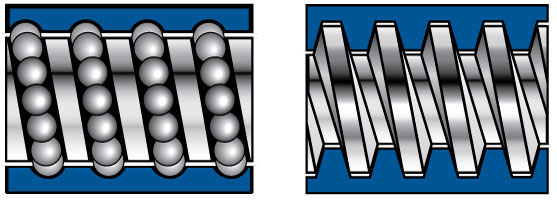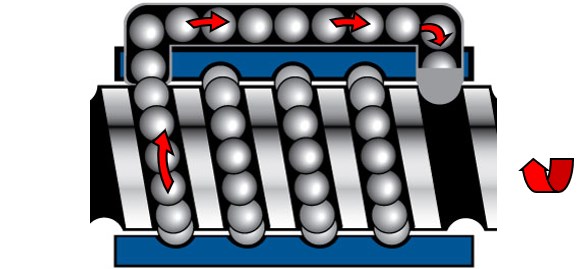Design and Theory
Ball screws convert rotary motion to linear motion and/or vice versa. A
ball screw assembly consists of a screw and a nut with recirculating
ball bearings. The connection between the screw and the nut is made by
ball bearings, which roll in the matching ball forms in the screw and
nut. The forces transmitted are distributed over a large number of ball
bearings, giving a relatively low load per ball. Since Ball screws
assemblies use rolling elements they have a low coefficient of friction .
The following video provides a little detail about ball screws.
What is the difference between a ball screw and a lead screw?
In
ball screws there are recirculating bearings. In lead or ACME screws
they operate only with sliding friction and do not have recirculating
bearings.

ball screw compared to a lead screw
Ball Screws feature:- 90% Efficient
- Rolling Contact
- Life limited by fatigue - Predictable life
- Lower starting torque
- more load capacity
Lead Screw or ACME screw features:
- 30-80% efficient
- Sliding friction
- life limited by wear - hard to predict life
The following video provides some information on the differences between lead and ball screws. And when one would be better in an application.



